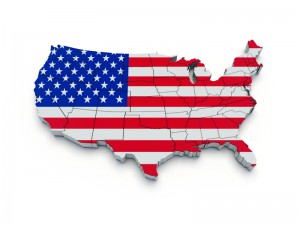 News organizations are increasingly turning to video to add another element to websites, while social media platforms continue to incorporate photo and video for users. On Tuesday, the White House streamed the State of the Union address through its White House channel on YouTube. But other non-television outlets were also involved in a streaming partnership, including newspapers like The New York Times, The Wall Street Journal, USA Today and The Washington Post.
News organizations are increasingly turning to video to add another element to websites, while social media platforms continue to incorporate photo and video for users. On Tuesday, the White House streamed the State of the Union address through its White House channel on YouTube. But other non-television outlets were also involved in a streaming partnership, including newspapers like The New York Times, The Wall Street Journal, USA Today and The Washington Post.
Beyond just covering the address in print, streaming gives newspaper and other print sites the ability to offer a new perspective, noted Julie Holley, managing editor of television content at Vocus Media Research Group. Watching the address on USAToday.com, Holley found the paper offered metrics on tweets per minute on what was being said during the address, while also displaying trending hashtags and top tweets.
Meanwhile, The Washington Post featured sentence-long highlights below the video, with updates on what the president was saying. “Many were clickable and either offered a fact-checking perspective or some sort of background on the topic being discussed. There was also a Twitter presence on the site, but it was not as prominent as on the other site,” she said.
With newspapers and other sites, like the Huffington Post, taking on the role of newscasting, it would seem as if the blurring of media is an increasing phenomenon. But Holley doesn’t believe that newspapers will be challenging TV quite yet in broadcasts, especially since it’s often a younger audience that is tuning in online. “Statistics show that young professionals are increasingly consuming their news online through their smartphones and tablets and often don’t even own a TV. So, they need somewhere to turn and these sites are fulfilling that need,” said Holley. “I think it comes down to brand in the future. What news organizations do people trust? TV and newspaper-based media organizations are continuing to try to build up that following and to become the place where people turn when news occurs. There are so many choices. Brand and following is important.”
Video has far-reaching results for media long-entrenched in only print, however. It allows newspapers to shape views on live coverage just as much as any of the major networks do, noted David Coates, managing editor of newspaper content at Vocus Media Research Group.
The blurring of media will most likely continue, with everyone carrying smart phones and having the ability to shoot video. “If you are a reporter and you can videotape while you are interviewing someone, why wouldn’t you?” said Coates. “I’m reminded of a time as a reporter when I was interviewing someone and asked them an uncomfortable question and my nose was in my notepad as I took down every word. A friend of mine who witnessed the interview (she was in TV at the time) said, ‘Did you see how uncomfortable he was with that question?’ I said, ‘No, I was too busy writing.’ Video is very revealing, and it can help newspaper websites tell their stories.”![]()

